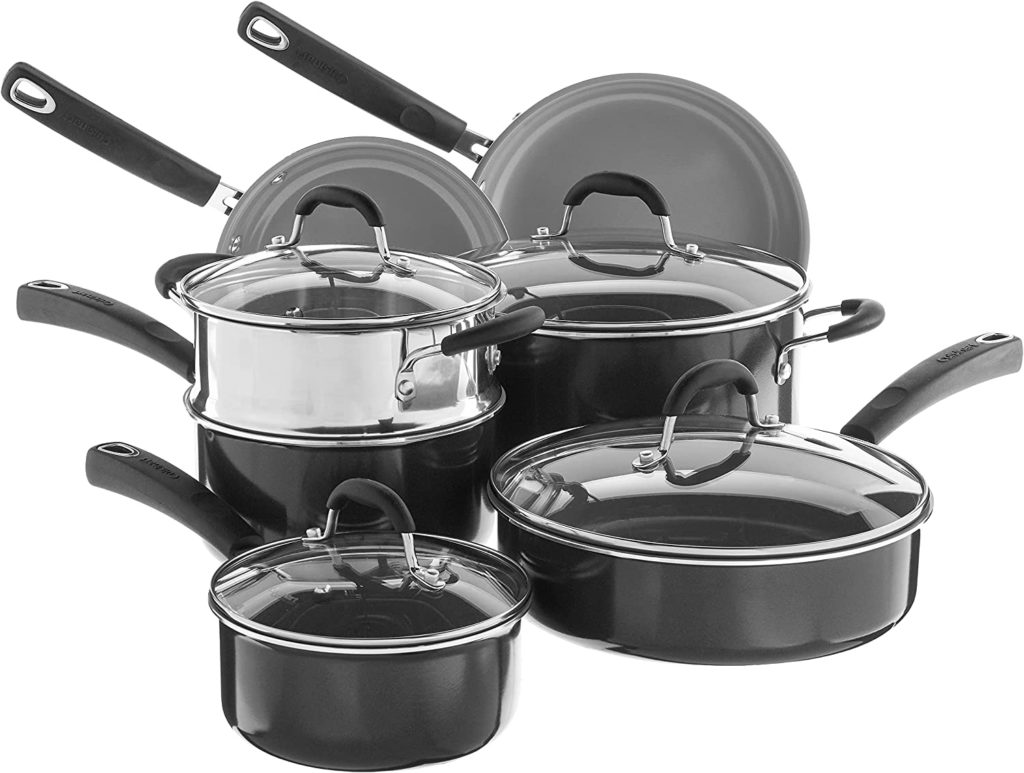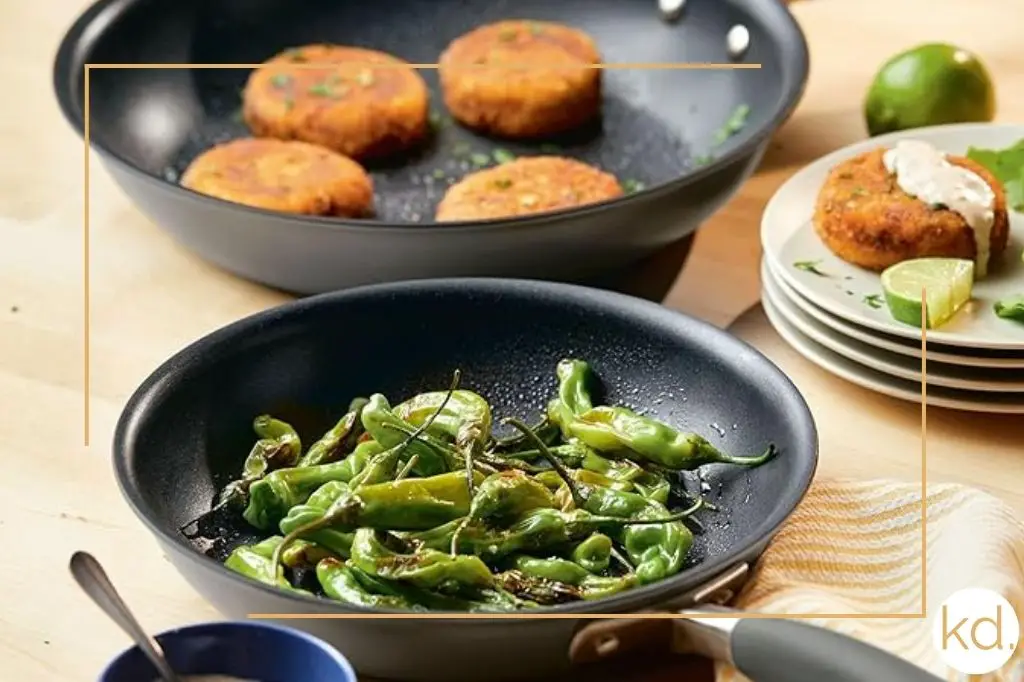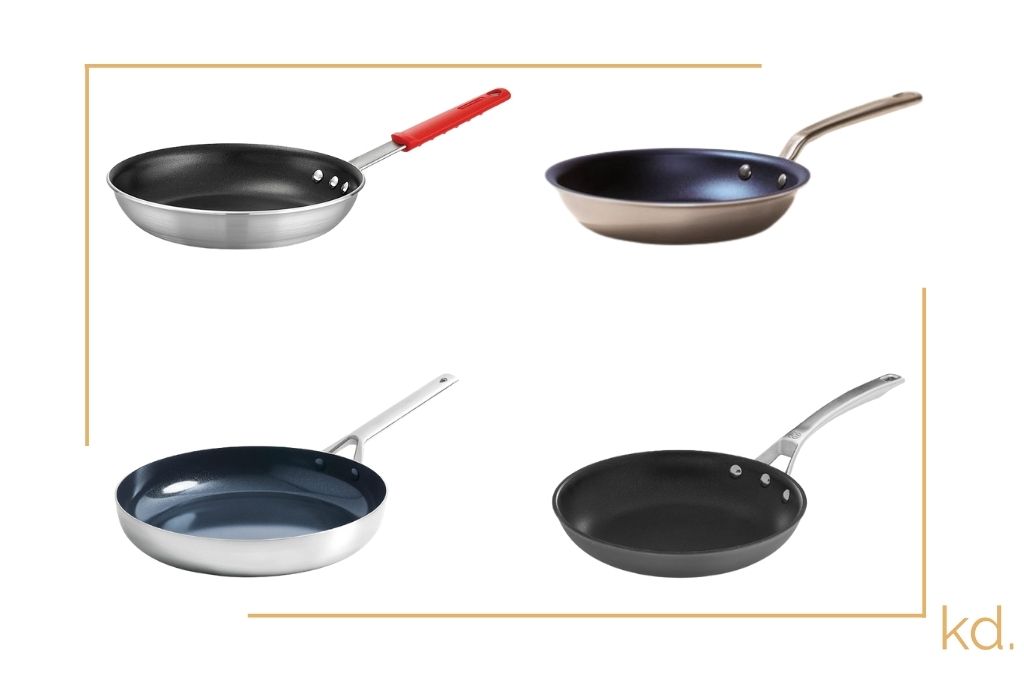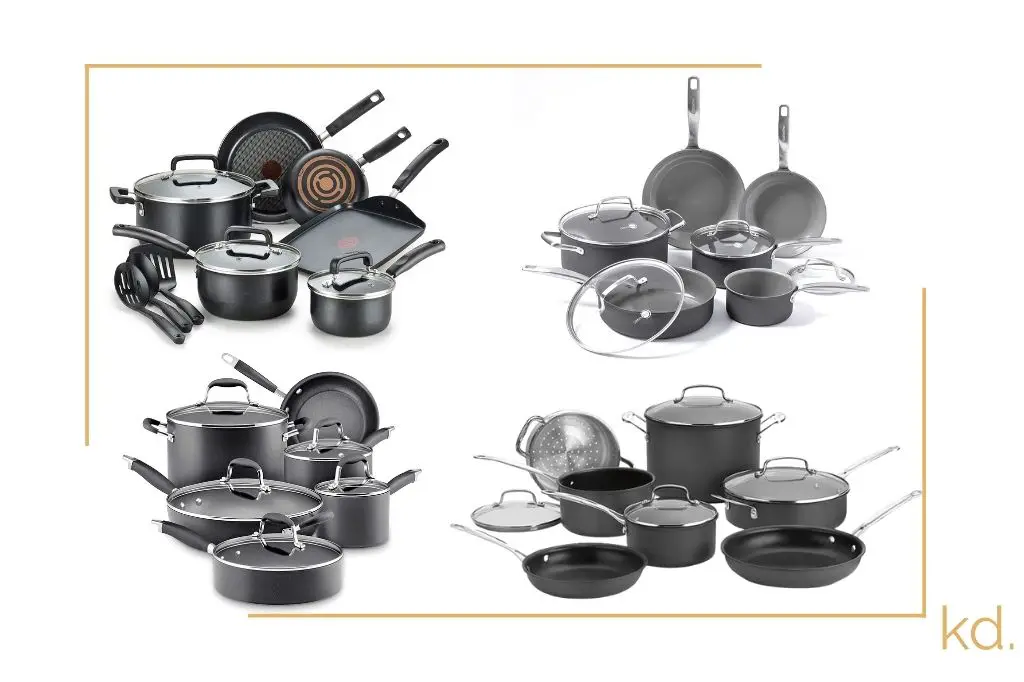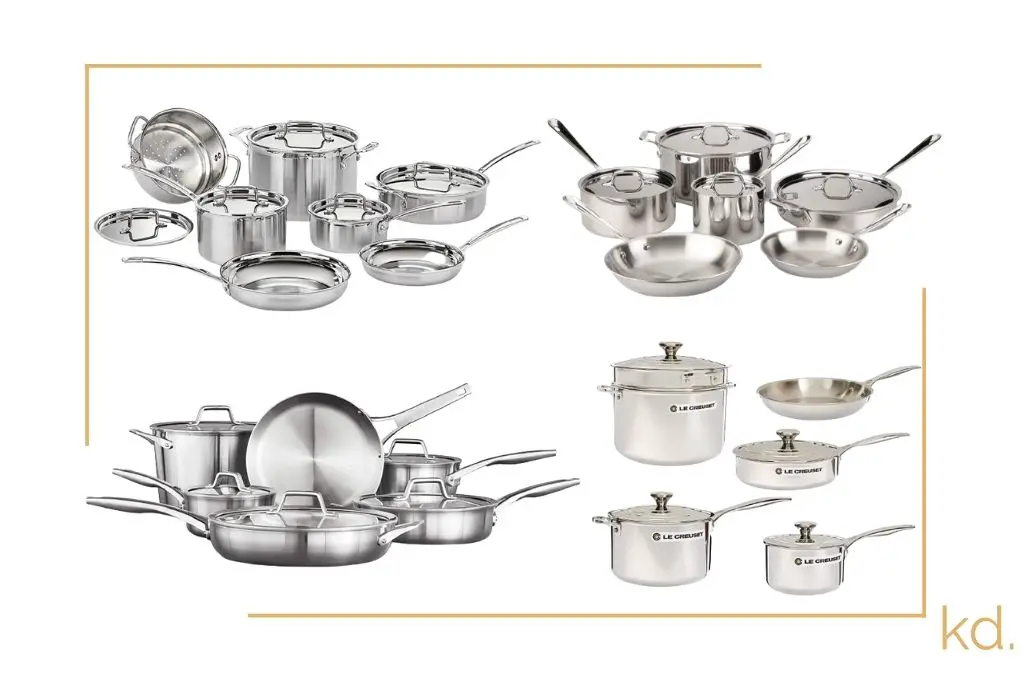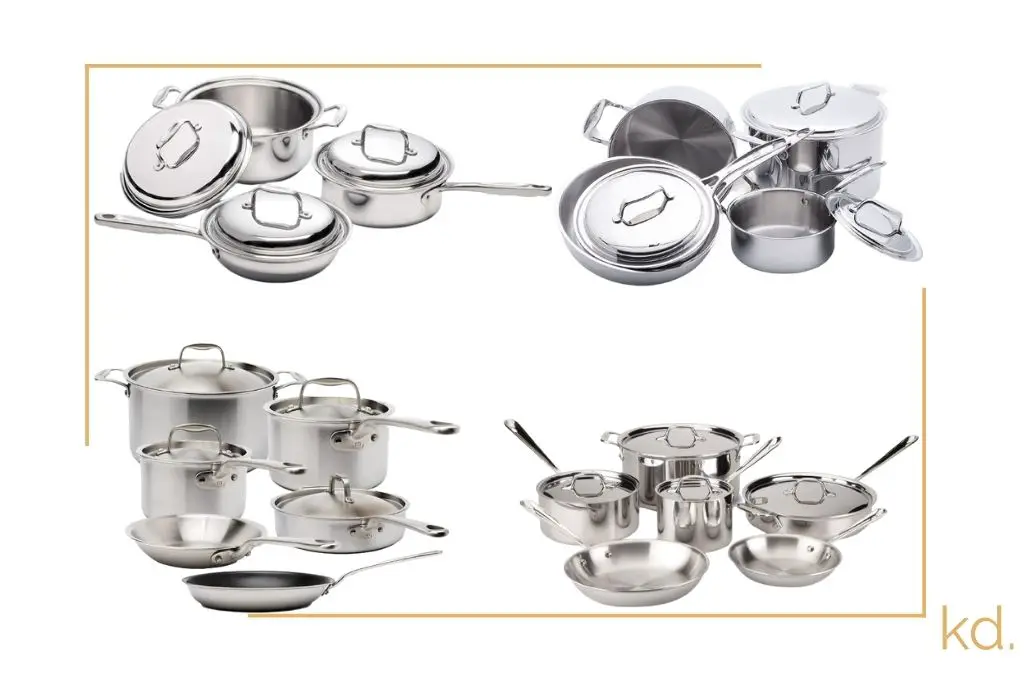The cookware we choose significantly impacts not only the quality of our meals but potentially our health as well. With growing concerns about chemicals in traditional non-stick cookware, many consumers are turning to ceramic options, often marketed as a safer alternative. But is ceramic cookware truly safe? This comprehensive guide examines the evidence, addressing both the advantages and potential concerns associated with ceramic cookware.
The popularity of ceramic cookware has surged in recent years, largely due to its reputation as a healthier alternative to conventional non-stick pans and its attractive appearance that transitions elegantly from stovetop to table. However, with this rise in popularity come questions about its safety, durability, and environmental impact. This article aims to provide evidence-based information to help you make an informed decision about whether ceramic cookware deserves a place in your kitchen.
We’ll explore what ceramic cookware is made of, examine potential health concerns, review the scientific research on its safety, compare it to other common cookware materials, provide guidelines for proper usage and maintenance, and offer tips for selecting high-quality ceramic cookware. By the end of this article, you’ll have a thorough understanding of the safety profile of ceramic cookware and whether it aligns with your cooking needs and health priorities.
This article is intended for informational purposes only and does not constitute medical advice. While efforts have been made to ensure accuracy, scientific understanding of cookware safety continues to evolve. Consumers should conduct their own research and consult with appropriate professionals regarding specific health concerns.
What is Ceramic Cookware?
Before diving into safety considerations, it’s essential to understand what exactly we mean by “ceramic cookware,” as this term encompasses different types of products with varying compositions and manufacturing processes.
Traditional Ceramic
Traditional ceramic cookware, often called “pure ceramic” or “100% ceramic,” is made entirely from clay, minerals, and water that has been shaped, glazed, and fired at high temperatures. This type of cookware has been used for thousands of years across numerous cultures. Examples include earthenware, stoneware, and porcelain cooking vessels.
Traditional ceramic cookware typically requires careful handling as it can be brittle and may crack with rapid temperature changes. It often features a glazed surface to make it non-porous, which prevents the absorption of liquids and makes it easier to clean. These glazes are where some safety concerns can arise, which we’ll discuss in more detail later.
Ceramic-Coated Cookware
More common in modern kitchens is ceramic-coated cookware, which consists of a metal base (usually aluminum or stainless steel) covered with a ceramic-based non-stick coating. This coating is typically made from inorganic materials like silicon, oxygen, and various minerals that create a hard, slick surface when applied to the metal base and cured at high temperatures.
Ceramic-coated cookware aims to combine the heat conductivity of metals with the non-stick properties and aesthetic appeal of ceramics. These products are often marketed as a safer alternative to traditional non-stick cookware made with polytetrafluoroethylene (PTFE), commonly known by the brand name Teflon.
It’s important to note that despite being called “ceramic,” the coating on these pans is not traditional pottery clay but rather a silicon-based polymer derived from sand. This distinction is crucial when evaluating safety claims and performance expectations.
The Composition of Ceramic Cookware
Understanding what ceramic cookware is made of is essential for assessing its safety profile. The materials and manufacturing processes vary between traditional ceramic and ceramic-coated options.
Materials Used in Pure Ceramic
Pure ceramic cookware is primarily composed of:
- Clay: The base material, which may be earthenware, stoneware, or porcelain clay
- Minerals: Various minerals are added to the clay to enhance its properties
- Water: Used to make the clay malleable before forming
- Glazes: Surface coatings that typically contain silica, alumina, fluxes, and sometimes colorants
The specific composition varies by manufacturer and can affect both the performance and safety of the final product. Higher-quality ceramic cookware is typically fired at very high temperatures (over 2,000°F/1,093°C), which vitrifies the clay, making it stronger and less porous.
Materials in Ceramic Coatings
Ceramic-coated cookware consists of:
- Metal Base: Usually aluminum, hard-anodized aluminum, or stainless steel
- Ceramic Coating: Typically made from a sol-gel process using silicon dioxide (derived from sand)
- Binders: Materials that help the coating adhere to the metal base
- Colorants: Pigments added to create various color options
The ceramic coating itself is generally composed of inorganic minerals, primarily silicon and oxygen, with other elements added for specific properties. The exact formulation is often proprietary, varying between manufacturers.
Unlike traditional PTFE coatings, ceramic coatings do not contain polytetrafluoroethylene (PTFE) or perfluorooctanoic acid (PFOA), chemicals that have raised health concerns. Instead, they rely on a hardened mineral-based surface to provide non-stick properties.
Manufacturing Process
The manufacturing process for ceramic cookware includes several steps that can influence its safety:
- For Pure Ceramic:
- Clay preparation and shaping
- Initial firing (bisque firing)
- Glazing
- Final firing at high temperatures
- For Ceramic-Coated:
- Metal base production
- Surface preparation
- Application of ceramic coating (often sprayed on)
- Curing at high temperatures (around 450°C/842°F)
The quality control during these processes is crucial for ensuring the safety of the final product, particularly regarding the potential inclusion of heavy metals in glazes or inadequate curing of coatings, which could lead to leaching of unwanted substances into food.
Health and Safety Considerations
When evaluating the safety of ceramic cookware, several factors come into play, including the potential presence of toxic metals, the stability of the materials at cooking temperatures, and the regulatory standards governing their production.
Lead and Cadmium Concerns
One of the primary safety concerns with ceramic cookware, particularly traditional ceramic with glazes, is the potential presence of lead and cadmium. These heavy metals have historically been used in ceramic glazes to provide vibrant colors and a smooth finish.
Lead Exposure Risks: Lead is a neurotoxin that can accumulate in the body over time, potentially causing serious health problems, including developmental issues in children and cardiovascular effects in adults. Even low-level exposure can be harmful, especially for pregnant women and young children.
Cadmium Concerns: Cadmium exposure has been linked to kidney damage and bone disease. Like lead, it can accumulate in the body over time.
Modern regulations in many countries limit the amount of lead and cadmium that can leach from ceramic products intended for food use. In the United States, the FDA regulates these levels through its Compliance Policy Guide (CPG) Section 545.450, which sets leaching limits for these metals.
It’s important to note that:
- High-quality ceramic cookware from reputable manufacturers in countries with strict regulations is generally tested to ensure it meets safety standards for lead and cadmium leaching.
- Older ceramic cookware, antique pieces, and items produced in countries with less stringent regulations may pose a higher risk.
- Acidic foods (like tomato sauce) can increase the leaching of metals from ceramic glazes.
- Damaged surfaces with cracks or chips can also increase the risk of leaching.
Non-Stick Properties and Chemicals
Ceramic-coated cookware is often marketed as a “chemical-free” alternative to traditional non-stick cookware. While ceramic coatings indeed do not contain PTFE or PFOA (chemicals associated with traditional non-stick surfaces), they are not completely “chemical-free” as all materials are composed of chemicals.
The advantages of ceramic coatings from a chemical safety perspective include:
- No PFOA or PTFE: These chemicals, associated with potential health concerns at high temperatures, are not present in ceramic coatings.
- Stability at High Temperatures: Ceramic coatings can typically withstand higher cooking temperatures (up to about 450°C/842°F) without releasing harmful fumes, unlike some PTFE coatings which can break down at temperatures above 260°C/500°F.
- Inert Surface: When properly manufactured, the ceramic coating creates an inert surface that does not react with foods or leach substances into them.
However, some considerations include:
- Nanoparticles: Some ceramic coatings may incorporate nanoparticles, which have been the subject of ongoing research regarding their safety. The current scientific consensus suggests that properly bound nanoparticles in ceramic coatings pose minimal risk, but research continues in this area.
- Binders and Processing Aids: The manufacturing process may involve various chemicals as binders or processing aids. High-quality products ensure these are fully cured and do not remain in the final product.
Regulatory Standards and Testing
Various regulatory bodies around the world have established standards for ceramic cookware safety:
- FDA (United States): Regulates the amount of lead and cadmium that can leach from ceramic surfaces.
- California Proposition 65: Sets even stricter standards for lead and cadmium.
- European Union: Has established limits through directives such as 84/500/EEC and subsequent amendments.
Reputable manufacturers test their products to ensure compliance with these standards. Testing methods typically include:
- Acid Leaching Tests: Exposing the ceramic surface to acidic solutions to measure potential metal leaching.
- Abrasion Testing: Evaluating how the surface holds up to repeated use and cleaning.
- High-Temperature Stability: Testing the coating’s integrity at various cooking temperatures.
Scientific Research on Ceramic Cookware Safety
Scientific research on ceramic cookware safety has produced mixed results, largely depending on the specific products tested and their manufacturing origins.
A 2018 study published in the journal “Science of The Total Environment” tested various types of cookware for metal release and found that ceramic-coated pans generally released lower levels of metals compared to some other types of cookware, particularly when new. However, the researchers noted that the performance could deteriorate with use and vary significantly between brands.
Another study published in the “Journal of Food Processing and Preservation” examined the migration of elements from ceramic cookware during cooking and found that well-manufactured ceramic cookware from reputable sources showed minimal leaching of concerning elements when used according to manufacturers’ guidelines.
Research specifically comparing ceramic coatings to PTFE-based non-stick coatings has generally found ceramic options to release fewer potentially harmful substances during normal cooking conditions, particularly at higher temperatures.
It’s worth noting that much of the available research focuses on new cookware; fewer studies have examined how ceramic cookware performs after extended use and with various cooking methods. This represents a gap in our understanding of long-term safety profiles.
Comparing Ceramic to Other Cookware Materials
To put ceramic cookware’s safety profile in context, it’s helpful to compare it with other common cookware materials, each with its own advantages and potential concerns.
Ceramic vs. PTFE (Teflon)
PTFE (Polytetrafluoroethylene), commonly known by the brand name Teflon, has been the dominant non-stick coating for decades.
Safety Comparison:
- Temperature Stability: Ceramic coatings can generally withstand higher temperatures (up to 450°C/842°F) without releasing harmful substances. PTFE coatings can begin to break down at temperatures above 260°C/500°F, releasing particles and gases that may cause polymer fume fever in humans and can be lethal to birds.
- Chemical Composition: Ceramic coatings do not contain PFOA or PTFE, chemicals that have raised health concerns. While modern PTFE production has phased out PFOA, the PTFE polymer itself remains a synthetic fluoropolymer.
- Durability: This is where PTFE typically outperforms ceramic coatings, often lasting longer before the non-stick properties deteriorate.
Performance Comparison:
- Non-stick Ability: New PTFE coatings generally provide superior non-stick performance compared to ceramic coatings, requiring less oil for cooking.
- Scratch Resistance: Ceramic coatings are typically harder and more scratch-resistant than PTFE coatings, though they can chip if dropped.
Ceramic vs. Stainless Steel
Stainless Steel is an alloy containing primarily iron, chromium, and nickel, known for its durability and versatility.
Safety Comparison:
- Reactivity: Properly manufactured stainless steel is generally considered non-reactive and safe for cooking, though it can potentially release small amounts of nickel and chromium, particularly when cooking acidic foods. Ceramic is typically completely non-reactive.
- Metal Leaching: High-quality stainless steel releases minimal metals into food, comparable to well-made ceramic cookware. However, lower-quality stainless steel may release more metals than high-quality ceramic.
Performance Comparison:
- Heat Distribution: Stainless steel typically has poorer heat distribution than ceramic-coated aluminum, unless it features an aluminum or copper core.
- Stick Resistance: Stainless steel is not naturally non-stick, unlike ceramic coatings.
- Durability: Stainless steel is significantly more durable than ceramic coatings, with a lifespan measured in decades rather than years.
Ceramic vs. Cast Iron
Cast Iron cookware has been used for centuries and is known for its exceptional heat retention and durability.
Safety Comparison:
- Iron Transfer: Cast iron can transfer significant amounts of iron into food, especially with acidic dishes. While iron is an essential nutrient, this could be a concern for those with iron metabolism disorders. Ceramic cookware does not transfer iron.
- Seasoning: Traditional cast iron requires seasoning with oil, which creates a somewhat non-stick polymerized surface. Some may have concerns about the safety of this polymerized oil at high temperatures, though it has been used safely for generations.
Performance Comparison:
- Heat Retention: Cast iron excels at heat retention, typically outperforming ceramic in this regard.
- Versatility: Cast iron can go from stovetop to oven at any temperature, while ceramic-coated cookware often has temperature limitations.
- Maintenance: Cast iron requires specific maintenance protocols, while ceramic is generally easier to clean and maintain.
Ceramic vs. Aluminum
Aluminum cookware is lightweight and an excellent conductor of heat, though it’s often anodized or coated due to reactivity concerns.
Safety Comparison:
- Reactivity: Uncoated aluminum can react with acidic foods, potentially leaching aluminum into food. Ceramic coatings over aluminum prevent this direct contact, addressing this concern.
- Aluminum Exposure: While the relationship between aluminum exposure and health conditions like Alzheimer’s disease remains controversial, ceramic coatings provide a barrier that eliminates direct food contact with aluminum.
Performance Comparison:
- Heat Conduction: Aluminum is an excellent heat conductor, and when used as a base for ceramic-coated cookware, it provides quick and even heating.
- Weight: Aluminum-based ceramic cookware is lighter than pure ceramic, cast iron, or stainless steel options.
Proper Usage and Maintenance for Safety
The safety of ceramic cookware is significantly influenced by how it’s used and maintained. Following proper guidelines can extend the life of the cookware and minimize any potential safety concerns.
Temperature Guidelines
Both pure ceramic and ceramic-coated cookware have specific temperature tolerances that should be respected:
For Pure Ceramic:
- Most pure ceramic cookware can withstand high oven temperatures but may crack if exposed to rapid temperature changes.
- Always heat pure ceramic cookware gradually rather than placing it directly on a high-temperature heat source.
- Check the manufacturer’s specific temperature guidelines, as they vary by product.
For Ceramic-Coated:
- Most ceramic coatings can safely withstand temperatures up to 450°C/842°F, higher than PTFE coatings.
- Nevertheless, extremely high temperatures should be avoided as they can potentially damage the coating over time.
- Avoid preheating empty ceramic-coated pans for extended periods.
Utensil Usage
The tools you use with ceramic cookware can significantly impact its longevity and safety:
- Use Soft Utensils: While ceramic coatings are harder than PTFE, they can still be damaged by metal utensils. Opt for wooden, silicone, or nylon utensils to protect the surface.
- Avoid Cutting: Never cut food directly in ceramic cookware, as this can scratch or chip the surface.
- Gentle Handling: Prevent banging or dropping ceramic cookware, which can cause chipping, particularly in pure ceramic options.
Cleaning and Storage
Proper cleaning practices help maintain the integrity of ceramic surfaces:
- Hand Washing Recommended: Even if labeled as dishwasher-safe, hand washing ceramic cookware with mild soap and soft cloths or sponges will extend its life.
- Avoid Abrasive Cleaners: Harsh scouring pads and abrasive cleaners can damage ceramic surfaces, potentially compromising their safety.
- Cool Before Cleaning: Allow ceramic cookware to cool before immersing in water to prevent thermal shock, which can cause cracking.
- Proper Storage: Store ceramic cookware carefully to avoid scratching or chipping. If stacking is necessary, place protective layers between pieces.
Signs of Wear and When to Replace
Knowing when to replace ceramic cookware is important for both performance and safety:
- Visible Chips or Cracks: Any visible damage to the ceramic surface could potentially expose underlying materials or create areas where bacteria can accumulate. Replace cookware with significant chips or cracks.
- Severe Scratching: While minor scratches may be cosmetic, deep scratches that potentially expose the base material warrant replacement.
- Significant Loss of Non-stick Properties: When food begins sticking regularly despite proper use and care, the coating has likely degraded and the pan should be replaced.
- Discoloration: While some discoloration is normal with use, significant changes in color might indicate coating degradation.
For pure ceramic cookware, any glazed surface that shows crazing (a network of fine cracks) should be used with caution or replaced, as these cracks could harbor bacteria or allow leaching of unwanted substances.
How to Choose Safe Ceramic Cookware
Selecting high-quality, safe ceramic cookware requires attention to several factors, from manufacturing origin to specific certifications.
Reputable Manufacturers
The reputation and transparency of the manufacturer are key indicators of product safety:
- Established Brands: Companies with long-standing reputations generally have more consistent quality control processes.
- Transparency: Look for manufacturers who are forthcoming about their materials, testing procedures, and safety standards.
- Manufacturing Location: Cookware produced in countries with strict regulatory environments (such as the United States, European Union, Japan) may be subject to more rigorous safety standards.
Certifications to Look For
Various certifications can help identify ceramic cookware that meets safety standards:
- FDA Compliance: In the US, look for products that explicitly state they meet FDA standards for food contact surfaces.
- California Proposition 65 Compliance: This indicates testing for lead and cadmium.
- European Union Standards: Products meeting EU standards have been tested for migration of certain substances.
- Third-Party Testing: Some manufacturers obtain additional certifications from independent laboratories.
Specific certifications include:
- PTFE-Free and PFOA-Free Certifications: Confirm the absence of these chemicals.
- Lead-Free and Cadmium-Free Claims: While these claims are positive, they should be backed by testing data.
- NSF International Certification: Indicates compliance with public health standards.
Quality Indicators
Physical attributes that may indicate higher-quality, safer ceramic cookware include:
- Weight: Better-quality ceramic cookware tends to feel substantial, indicating thicker materials.
- Surface Finish: The coating or glaze should be smooth and even, without bubbles, pinholes, or rough patches.
- Construction: Well-attached handles, tight-fitting lids, and overall solid construction suggest attention to manufacturing details.
- Base Thickness: Thicker bases provide better heat distribution and indicate higher quality.
Price Considerations
While price isn’t a perfect indicator of safety, there are some correlations:
- Very Low-Priced Options: Extremely cheap ceramic cookware may cut corners on materials or quality control, potentially increasing safety risks.
- Mid-Range Products: Often provide a good balance of quality and value, with adequate safety testing.
- Premium Products: Higher-priced options typically use better materials and more rigorous testing, though the relationship between price and safety is not always linear.
Rather than focusing solely on price, research the specific brand and product line, reading customer reviews particularly regarding durability and any reports of unusual odors, discoloration, or rapid deterioration of the cooking surface.
Environmental Impact
The environmental aspects of ceramic cookware are increasingly important to many consumers and have indirect connections to human health and safety.
Production Footprint
The manufacturing process for different types of ceramic cookware varies in environmental impact:
- Pure Ceramic: Production requires significant energy for firing at high temperatures. However, the raw materials (clay and minerals) are generally abundant and natural.
- Ceramic-Coated: The metal base production (particularly aluminum) has substantial environmental impacts, including resource extraction and energy use. The ceramic coating process typically has a lower environmental footprint than PTFE coating production.
Some manufacturers are working to reduce their environmental impact through:
- Energy-efficient kilns
- Water recycling in production facilities
- Reduction of harmful emissions
- Sourcing clay and minerals from sustainable operations
Disposal and Recyclability
End-of-life considerations for ceramic cookware include:
- Pure Ceramic: Generally not recyclable through conventional programs but is made of natural materials that eventually break down into non-toxic components when landfilled.
- Ceramic-Coated: The composite nature (metal base with ceramic coating) makes recycling challenging. Some manufacturers have take-back programs for responsible disposal.
The durability factor is also environmentally relevant—longer-lasting cookware means less frequent replacement and therefore less manufacturing impact over time. In this regard, pure ceramic and high-quality ceramic-coated options that are properly cared for can be environmentally preferable to frequently replaced cheaper alternatives.
FAQs About Ceramic Cookware Safety
Q: Is all ceramic cookware lead-free? A: No, not all ceramic cookware is lead-free. While reputable manufacturers in countries with strict regulations produce lead-free products, some imported or artisanal products may contain lead in their glazes. Always look for specific lead-free certifications or statements.
Q: Can ceramic cookware release harmful chemicals when heated like Teflon can? A: Properly manufactured ceramic cookware does not release harmful chemicals when heated, even at high temperatures, unlike some PTFE coatings which can break down and release potentially harmful substances at temperatures above 260°C/500°F. This is one of the main safety advantages of ceramic over traditional non-stick coatings.
Q: How long does the ceramic coating typically last? A: With proper care, a good-quality ceramic coating typically lasts 1-3 years before its non-stick properties begin to significantly deteriorate. This is generally less durable than PTFE coatings, which may last 3-5 years. Pure ceramic cookware, if not damaged, can last decades.
Q: Is it safe to use ceramic cookware that has small scratches? A: Minor surface scratches on ceramic-coated cookware are generally not a safety concern, as the materials underneath modern coatings are typically food-safe aluminum or stainless steel. However, deep scratches or chips that expose the base material may allow more interaction between food and the base material and could affect cooking performance.
Q: Can ceramic cookware go in the dishwasher? A: While some ceramic cookware is labeled as dishwasher-safe, hand washing is generally recommended to extend the life of the coating and preserve the non-stick properties. The harsh detergents and high temperatures in dishwashers can degrade ceramic coatings more quickly.
Q: Is ceramic cookware safe for induction stovetops? A: Pure ceramic cookware is not compatible with induction cooking. Ceramic-coated cookware is only induction-compatible if it has a ferromagnetic base (containing iron or magnetic stainless steel). Always check the manufacturer’s specifications for induction compatibility.
Q: Do I need to season ceramic cookware like cast iron? A: Unlike cast iron, ceramic cookware does not require seasoning. However, some manufacturers recommend lightly coating the surface with oil before first use and occasionally thereafter to maintain the non-stick properties longer.
Q: Is ceramic cookware more environmentally friendly than other options? A: Ceramic cookware generally has a lower environmental impact than PTFE-coated cookware in terms of production chemicals, but the overall environmental footprint depends on numerous factors including durability, manufacturing processes, and end-of-life disposal options.
Conclusion
After examining the evidence regarding ceramic cookware safety, we can draw several conclusions:
- Generally Safe When Properly Made: High-quality ceramic cookware from reputable manufacturers, particularly those meeting established regulatory standards, is generally safe for everyday cooking when used as directed.
- Advantages Over Traditional Non-Stick: Ceramic coatings offer several safety advantages over traditional PTFE-based non-stick surfaces, particularly their stability at high temperatures and the absence of PFOA and PTFE.
- Quality Matters: There are significant differences between high-quality and low-quality ceramic products. Poorly manufactured ceramic cookware, particularly from regions with less stringent regulations, may pose risks related to lead, cadmium, or premature deterioration.
- Proper Use Enhances Safety: Following temperature guidelines, using appropriate utensils, and replacing cookware when it shows significant signs of wear are essential practices for maintaining both safety and performance.
- Balanced Perspective Required: While ceramic cookware offers many advantages, it’s not perfect—particularly regarding durability and longevity of non-stick properties compared to some alternatives.
For consumers concerned about cookware safety, ceramic options represent a reasonable choice within a spectrum of available materials, each with its own profile of advantages and disadvantages. The key is selecting high-quality products from trusted sources, understanding the proper care and usage techniques, and being aware of when replacement becomes necessary.
When weighing options, consider your specific cooking needs, health priorities, budget constraints, and environmental concerns. No single cookware material is perfect for all situations, and many home cooks find that having a variety of cookware types for different purposes provides the optimal balance of safety, performance, and versatility.
By staying informed about the materials in your kitchen and how to use them safely, you can make choices that align with your priorities while still enjoying the pleasures of cooking and sharing meals.
